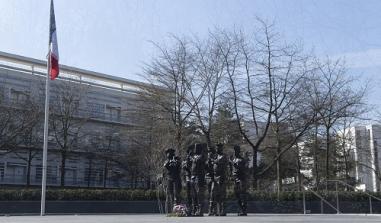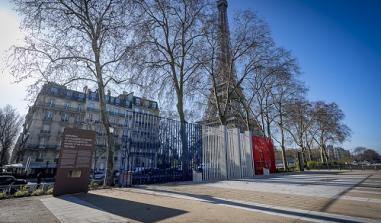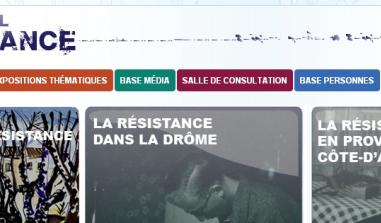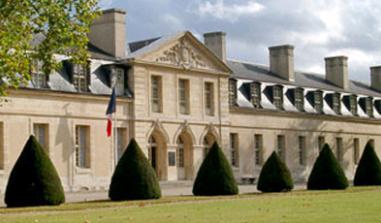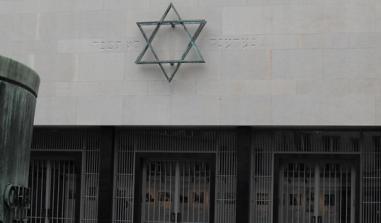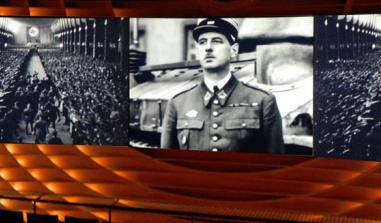Museum of the Legion of Honour and the orders of chivalry
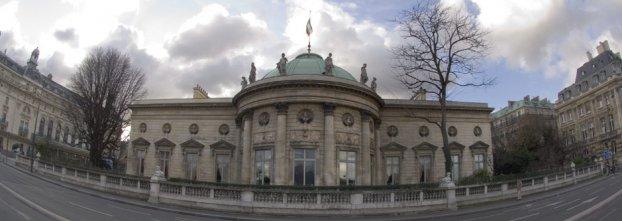
Façade du musée de la Légion Honneur. Source : Photo JP Le Padellec, MINDEF/SGA/DMPA
The history of decorations and the French orders of chivalry since Louis XI are displayed in this museum.
After five years of closure in order to carry out work under the supervision of Lucie Garban, Alain Desmarchelier and Marc Vareille, the Museum of the Legion of Honour and the Orders of Chivalry is now open. A surprising journey can be taken around the world through its collection of French Legion of Honour decorations through the ages, from the Middle Ages to present day.
This important place of national remembrance was created in 1925 on the initiative of General Dubail and thanks to a subsequent donation by an American man, William Nelson Cromwell, which financed four fifths of its construction. The museum currently occupies a whole wing in the Salm palace, a private building in the neo-classical style. It was constructed between 1782 and 1787 for a German prince, Prince Frederick of Salm-Kyrbourg and overlooks the courtyard of the Museum d'Orsay. When the Revolution came and along with it the Reign of Terror, the prince was led to the scaffold on the 23rd July 1794, leaving numerous debts to his son. His creditors ensured that the palace, which featured on the list of national properties, was returned to the family in order to repay their loans. This is how the palace came to be used for a while as a republican club frequented by Madame de Staël and for art exhibitions. Its purchase on the 3rd May 1804 by the Count of Lacépède, the Grand Chancellor and Chancellor of the Legion of Honour, brought these fluctuations in fortune to an end.
The new unobtrusive, modern layout is respectful to the philosophy of General Yvon Dubail, the founder of the museum in 1925, and maintains all the original charm of its galleries. The original showcases have been restored and adapted, reinstating the large exhibition space in the two large halls. The materials chosen, mahogany and oxidised brass, are in tune with the Empire-inspired décor of 1925, but with a contemporary feel. Having chosen a logical route that makes use of our philosophy of discovery, the museum offers tours that are suitable for any audience. Its renovation has allowed an increase in exhibition space, making the collections more vibrant and easier to read, without detracting from the charm and elegance of its internal architecture. The first part of the museum tour covers the history of national decorations. The orders of chivalry were inspired by the chivalrous ideal and the well-founded organisation of religious and military orders. Later, from the 14th Century, the princes of Europe founded their own orders of chivalry. In France, the royal orders of Saint-Michel (1469) and Saint-Esprit (1578) provided the framework for the Old Regime and their prestige remains engraved on the memory.
The first order of democratic merit, the military order of Saint-Louis, was created by Louis XIV in 1693. It was the forerunner of the Legion of Honour, whose roots are firmly planted in the traditions of French chivalry. The orders and awards of the old continent encapsulate the construction and development of the various countries that make up Europe. Often inspired by the French model, orders of merit came into general use from the 18th Century onwards. These were open to everyone and complemented by numerous military and civilian decorations, adapted to suit the history and symbolism of each country. Certain states, like the United States only recognise decorations, such as the prestigious Congressional Medal of Honour, saving their only order, the Legion of Merit, for foreigners. As for the countries of Latin America, they owe their awards system to those European models that have had great presence in their past. Lastly, the concept of honorary orders, as distinct from any material reward, was foreign to African and Asian civilisations. It was only in the 19th Century that western customs were gradually adopted and several orders were created.
As well as decorations, the museum also has the stained glass window depicting the king of Rome as a child, the First Consul painted by Gros, the drumsticks of the Arcole drum, Louis-Philippe receiving the Garter from the hands of a young Queen Victoria, astonishing scenes from the Algeria campaign under the July Monarchy and a superb portrait of Guynemer etc. "The Legion of Honour rewards an outstanding achievement for the benefit of the Nation, an act of bravery or a life of devotion," emphasises Anne de Chefdebien. "Through the objects and portraits exhibited here, the institution of the Legion of honour also delivers a civil message. A walk-through multimedia tour will allow you to meet some exceptional men and women. From a portrait, an honour or an artefact, visitors can learn more about the people who really mattered."
Fifty backdrops have been erected along the route, which ends in an interactive room where three hundred portraits are displayed, illustrating the richness and diversity of the national orders. These portraits allow us to reflect on the merits of those people who have shaped our nations. The insignia displayed at the Museum of the Legion of Honour are two-way mirrors. The interactivity of the tour encourages visitors to approach them, through providing audio-guided tours, audiovisual routes and a resource centre at the end of the tour. On the one hand, through the symbols, figures and designs that they bear, the decorations are witnesses to great historical events, the revolutions and wars that have shaped the France of today and her values. The comprehensive audio guide emphasises the museum's philosophy, which is to compare the orders of chivalry with contemporary distinctions and study the relationship through the ages between political power and the nobility and, later, civil society. On the other hand, the insignia carry on the memory of those who wore them. Every object is testament to a personal history, to an act of bravery or generosity, or to a life devoted to art, science or sport. In the halls, around fifty portraits can be displayed on interactive audiovisual terminals (directed by the audio guide) and more than 250 figures from the 19th and 20th Centuries are expanded upon in the resource centre, freely accessible in its own dedicated room. The resource centre is also accessible for teachers via the extranet. The Grand Chancellery currently administers the two national orders (the Legion of honour and the National Order of Merit) and the military medal. On the 31st December 2005, the Legion of honour had 98,373 members (nowadays, women represent about 17 % of civilian awards), the National Order of Merit, 194,908 (today, 27 % of civilian awards go to women) and there are 187,294 military medal holders.
Museum of the Legion of Honour and the orders of chivalry 2 rue de la Légion d'honneur 75007 Paris Tel.: 01 40 62 84 25 Fax: 01 40 62 84 96 Email: musee@legiondhonneur.fr Access Underground - Solférino Metro station RER Museum d'Orsay Bus 63, 68, 69, 73, 83, 84, 94 Access for those with reduced mobility 1 rue de Solférino 75007 Paris (Appointments on 01 40 62 84 25) Free entry From Wednesday to Sunday from 1pm until 6pm. Tuesday reserved for groups by appointment. Closed on Mondays and on the 1st January, 1st May, 15th August, 1st November and 25th December Other Departments Library and documentation department By appointment only, tel. 01 40 62 84 25 Society of the friends of the museum Created in 1970 and made a public service in 1964, it contributes to publicising the museum and is actively involved in enriching the collections and in publications. It publishes a newsletter. More information on 01 40 62 84 25. Shop Entry is free to the museum shop during museum opening times (mail order available, telephone 01 42 65 57 53 for a catalogue.)
Practical information
2 rue de la Légion d'honneur 75007
Paris
01 40 62 84 25
Visite libre Visite guidée : 150 euros TTC 25 personnes maximum
Du mercredi au dimanche de 13h à 18h, mardi réservé aux groupes sur réservation. Fermé les lundis
Fermé les 1er janvier, 1er mai, 15 août, 1er novembre et 25 décembre.


